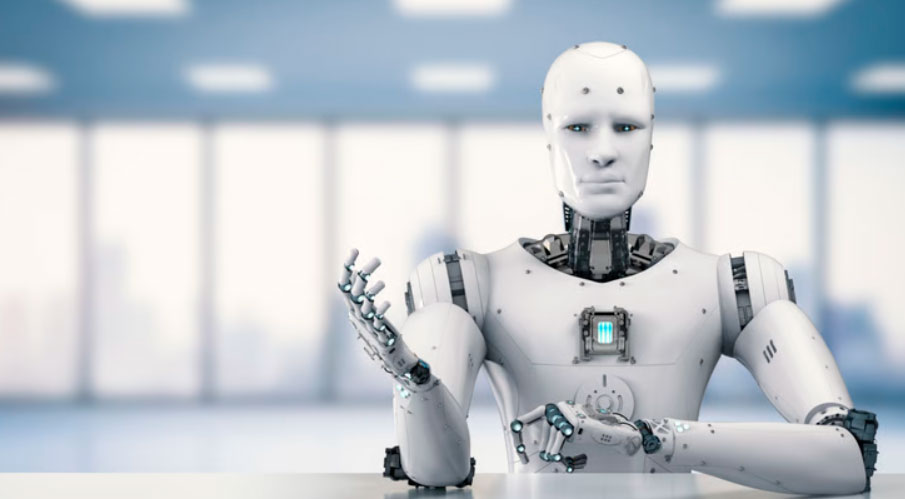El primer robot que se anunció fue de la firma tecnológica china Xiaomi, que presentó su robot CyberOne en agosto. El robot de U$ 104,000 camina como una persona y puede reconocer 45 emociones diferentes cuando interactúa con los humanos que encuentra. Con una altura de 1,5m, está diseñado para estar cara a cara con los humanos comunes, y con 52kg, de peso. En el futuro, un robot doméstico puede ser más barato que un automóvil.
Elon Musk will unveil Tesla’s first humanoid robot on Friday at the company’s “AI Day.” Set to be worth more than Tesla’s cars, the robot made us wonder: is the future already here?
Since people first forecasted the future, the idea of humanoid robots that help around the house or do everyday chores has been imagined from the minds of those who believed they could fast-forward to future generations. Everything from The Jetsons to other depictions of the near future have envisaged that we’d have humanoid robots by now who could take the weight off humans by doing mundane tasks we don’t like doing like washing and cleaning.
Of course, science fiction – which is what that was – rarely becomes science fact. The future we were promised has not yet arrived, and we’re stuck struggling with mundane tasks that we don’t really want to do. The robot revolution is not upon us.
Until now. Two robots in recent weeks have offered the potential of the science fiction future we envisaged becoming a reality. And they’re from two of the largest tech companies – suggesting that their adoption could become a reality in the near future.
Humanoids become human
The first robot to be announced was from Chinese tech firm Xiaomi, which unveiled its CyberOne robot in August. The $104,000 robot walks just like a person does and can recognize 45 different emotions as it interacts with humans that it encounters. At a height of 5’9”, it’s designed to stand eye to eye with ordinary humans, and at 114lbs, it weighs as much as a normal human too.
“With AI at its core and a full-size humanoid frame as its vessel, this is an exploration of possibilities of Xiaomi’s future technological ecosystem and a new breakthrough for the company,” said Lei Jun, Founder, Chairman, and CEO of Xiaomi Group, unveiling the robot.
The robot will also identify 85 environmental sounds, alongside the 45 human emotions that it can discover, using its AI interaction algorithm that perceives where it is in the world in three dimensions, as well as recognizing gestures, words, and signals. “CyberOne supports up to 21 degrees of freedom in motion and achieves a real-time response speed of 0.5ms for each degree of freedom, which allows it to fully simulate human movements,” according to a Xiaomi statement. And the AI will be supercharged, the statement suggests. “CyberOne is able to detect happiness, and even comfort the user in times of sadness.”
Tesla to unveil its first robot
But Xiaomi is far from the only company moving us into the science-fiction future. In almost the same week that Xiaomi announced its robot, Elon Musk, Tesla’s CEO and founder of SpaceX, announced his own version of a humanoid robot called Optimus.
Writing a controversial column for Chinese state media, Musk said: “We plan to launch the first prototype of a humanoid robot this year and focus on improving the intelligence of that robot and solving the problem of large-scale production. Thereafter, humanoid robots’ usefulness will increase yearly as production scales up and costs fall. In the future, a home robot may be cheaper than a car. Perhaps in less than a decade, people will be able to buy a robot for their parents as a birthday gift.”
Now, Tesla’s robot is approaching, with the release date set as Friday, September 30. Supposed to be a 5-foot-8-inch, 125-pound human-size robot, it should be able to operate in the real world by following instructions.
“It should be able to, you know, ‘please go to the store and get me the following groceries,’ that kind of thing,” Musk announced.
The goal Musk wrote about was for humanoid robots to go beyond industrial work in factories and instead to make themselves at home in the home, helping out with household tasks in a way that would be meaningful.
“It is foreseeable that with the power of robots, we will create an era of extreme abundance of goods and services, where everyone can live a life of abundance,” Musk wrote. “Perhaps the only scarcity that will exist in the future is for us to create ourselves as humans.”
Fuente: https://cybernews.com


